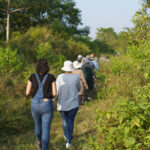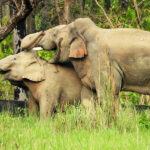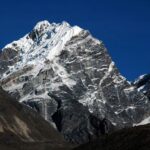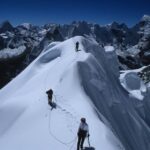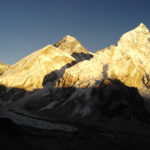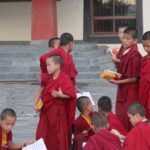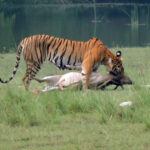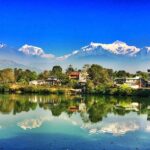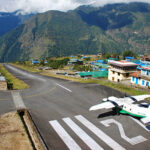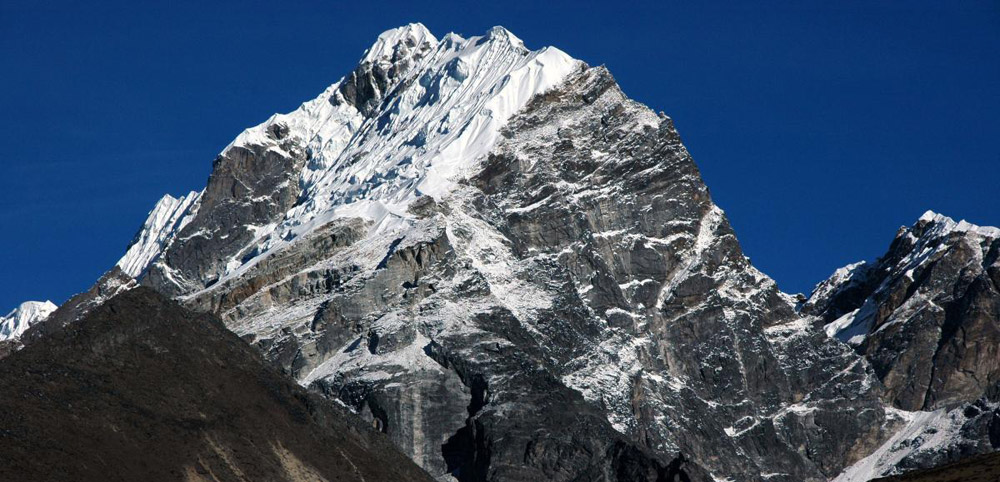
Lobuche Peak Climbing in Nepal – Cost, Route, Difficulty & Best Season
Climbing Lobuche Peak is one of the most rewarding experiences in the Himalayas for those looking to take on a greater challenge than a standard trekking adventure. Rising to 6,119 meters (20,075 ft), Lobuche East Peak offers a blend of trekking and technical mountaineering with stunning views of the world’s tallest mountains, including Everest, Lhotse, Nuptse, and Pumori.
Whether you’re a trekker aspiring to climb your first Himalayan peak or an experienced climber looking to acclimatize before a major expedition, Lobuche Peak provides a scenic, adventurous, and relatively accessible route to the top.
Introduction to Lobuche Peak
Lobuche Peak is located in the Khumbu region of Nepal, near the Everest Base Camp trail. It features two summits:
- Lobuche East (6,119 meters): A designated trekking peak and the one commonly climbed.
- Lobuche West (6,145 meters): A more technical and rarely climbed expedition peak.
Lobuche East, the primary focus of most commercial climbing expeditions, is considered more technically challenging than other trekking peaks like Island Peak. It requires a combination of glacier travel, fixed-rope climbing, and traversing exposed ridgelines.
Is Lobuche Peak Difficult to Climb?
Lobuche East is moderately technical. It’s more demanding than Island Peak but less extreme than 7,000 or 8,000-meter expedition peaks. The most difficult section is a steep 45-50 degree snow and ice slope leading to the summit ridge, where climbers use fixed ropes for safety.
Major challenges include:
- Steep ascents and fixed rope sections
- Exposed ridgeline walking with significant drop-offs
- High altitude conditions
- Glacier and crevasse crossings
While it’s suitable for climbers with basic mountaineering experience, this peak is not recommended for those without prior trekking or high-altitude exposure.
Can a Beginner Climb Lobuche Peak?
Lobuche East can be climbed by ambitious beginners who are physically fit and mentally prepared. However, it’s best suited to those who:
- Have done at least one high-altitude trek (e.g., Everest Base Camp or Annapurna Base Camp)
- Have participated in basic mountaineering courses or practice sessions
- Are accompanied by experienced guides
Reputable companies like Getaway Nepal Adventure include pre-climb training at base camp, where climbers practice rope techniques, ice axe usage, crampon walking, and ladder crossings over crevasses.
How Much Does It Cost to Climb Lobuche Peak?
The cost of climbing Lobuche Peak varies based on group size, services, and itinerary. A package usually includes guides, permits, domestic flights, food, lodging, and equipment.
Price Range:
- Budget packages: $2,000 to $2,500
- Standard packages: $2,800 to $3,800
- Premium packages (with EBC, extra acclimatization): $3,800 to $5,000+
What’s Included:
- Lobuche Peak climbing permit
- Sagarmatha National Park and local entry permits
- Guide, porter, cook, and climbing Sherpa
- Domestic flights (Kathmandu to Lukla round-trip)
- Accommodation (lodges and tents)
- Meals during trek and climb
- Group climbing gear
Exclusions:
- Personal climbing equipment (can be rented)
- Travel insurance (must include evacuation)
- Tips for staff
- Meals in Kathmandu
Climbing Route for Lobuche Peak
The standard approach to Lobuche East follows the Everest Base Camp (EBC) trail, providing ample time for acclimatization and scenic exploration.
Typical Itinerary:
- Kathmandu to Lukla flight and trek to Phakding
- Trek to Namche Bazaar (acclimatization day)
- Continue to Tengboche, Dingboche, and then Lobuche village
- Optional detour to Everest Base Camp and Kala Patthar
- Trek to Lobuche Base Camp (4,950 m)
- High Camp (5,400 m) – acclimatization and training
- Summit day (starts around 2 AM): ascend via glacier, steep snow slope, and ridge
- Return to Base Camp or Pheriche
Route Highlights:
- Trekking through Sherpa villages and Buddhist monasteries
- Glacier travel and fixed-line ascent
- Summit views of Everest, Lhotse, Makalu, and more
Best Time to Climb Lobuche Peak
Lobuche East is best climbed during Nepal’s pre-monsoon (spring) and post-monsoon (autumn) seasons.
Spring (March to May):
- Stable weather
- Good snow conditions
- Longer daylight hours
Autumn (September to November):
- Clear skies
- Great mountain visibility
- Ideal trail and glacier conditions
Avoid the monsoon (June to August) due to rain, landslides, and poor visibility, and the winter months (December to February) unless you are experienced with cold-weather alpine climbing.
Required Permits
To climb Lobuche East, you’ll need:
- Lobuche Peak Climbing Permit via NMA:
- Spring: $250
- Autumn: $125
- Winter/Summer: $70
- Sagarmatha National Park Entry Permit (~$25)
- Khumbu Pasang Lhamu Rural Municipality Permit (~$17)
These are usually included in your package or can be arranged in Kathmandu.
Training & Fitness for Lobuche Climb
Lobuche Peak demands both endurance and strength. Training 10–12 weeks before the expedition is recommended.
Suggested Training Plan:
- Cardio: Running, cycling, stair climbing (4–5 times/week)
- Strength: Core, legs, and back workouts
- Altitude prep: Hike at elevation if possible
- Climbing gear practice: Train with boots, harness, and backpack
A structured plan will help prevent fatigue and increase summit success.
Required Gear
Some group climbing gear is provided, but you’ll need personal gear such as:
- Double-layer mountaineering boots
- Harness, helmet, and crampons
- Ice axe, ascender (Jumar), carabiners
- Thermal base layers, down jacket, windproof shell
- Headlamp, sunglasses, gloves, gaiters
Most items can be rented in Kathmandu or Namche Bazaar, but test everything before the climb.
Why Choose Lobuche Peak?
Lobuche Peak is ideal for those seeking:
- A technically rewarding climb with moderate difficulty
- Unmatched views of Everest and Khumbu Himalaya
- A step between trekking peaks and full expeditions
- An adventurous side trip to Everest Base Camp
It’s also a preferred training climb for bigger goals like Ama Dablam or Mt. Everest.
Final Thoughts: Is Lobuche Peak for You?
If you’re looking for a challenging yet achievable Himalayan peak, Lobuche East is an excellent choice. It offers a real mountaineering experience with minimal logistics compared to larger expeditions, while still providing epic views and a significant sense of achievement.
With proper preparation, professional guidance, and support from experienced local companies like Getaway Nepal Adventure, you can safely conquer Lobuche Peak and create memories that will last a lifetime.

